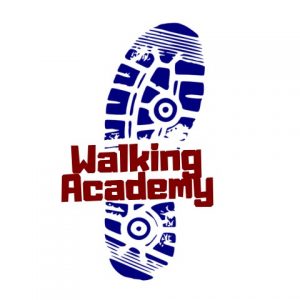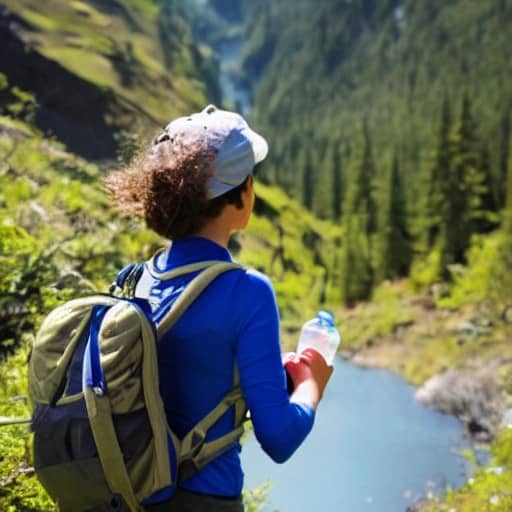Table of Contents
Some links on posts are affiliate links and will earn us a commission from qualifying purchases
If you’re planning on taking a hike, whether it’s a leisurely stroll through the park or an ambitious trek up a mountain, it’s important to have the right equipment. In this article, we’ll cover the essentials you need to bring along, as well as some extras that are nice to have but not essential.
Footwear
First and foremost, you’ll need a good pair of hiking boots or shoes. Your feet are going to be doing a lot of work, so you want to make sure they’re well supported and protected. Look for boots with sturdy soles, good ankle support, and breathable material.
Check out our footwear buying guide here.
Clothing
Dressing appropriately is key to a successful hike. You’ll want to wear comfortable, breathable clothing that can be layered as needed. Avoid cotton, which holds onto moisture and can lead to chafing and discomfort. Instead, opt for synthetic materials that wick away sweat and dry quickly.
Depending on the weather and terrain, you may need a waterproof jacket, hat, and gloves. Sunglasses and sunscreen are also important to protect your skin and eyes from the sun’s harmful rays.
Navigation
Even if you’re sticking to a well-marked trail, it’s a good idea to bring a map and compass. Make sure you know how to use them before you head out. A GPS device can also be helpful, but don’t rely solely on technology – batteries can die or signal can be lost. A whistle and signal mirror are also important in case you get lost or need to signal for help.
Water
Staying hydrated is crucial on a hike, so make sure you bring plenty of water. The amount you’ll need depends on the length and difficulty of your hike, as well as the weather. As a general rule, plan on drinking at least 2 liters of water per day. Bring a water bottle or hydration system, and consider packing a water filter or purification tablets if you’ll be drinking from natural sources.
Learn more about taking water on hikes here.
Food
Fueling your body is just as important as staying hydrated. Bring plenty of high-energy snacks like trail mix, granola bars, and jerky. Pack a lunch or sandwiches if you’ll be out for a full day. Avoid foods that are heavy, greasy, or difficult to digest.
Want to learn more about what foods to take with you, or how about when you get back?
First Aid
Accidents can happen on the trail, so it’s important to be prepared. A basic first aid kit should include bandages, antiseptic wipes, pain relievers, and any prescription medications you need. Consider adding items like insect repellent, moleskin for blisters, and a CPR face mask.
Lighting
If you’ll be hiking in low-light conditions, bring a headlamp or flashlight. Even if you plan on being back before dark, it’s a good idea to have a light source just in case.
Rucksack
Last but not least, you’ll need a backpack to carry all of your gear. Look for a pack that’s comfortable to wear and fits your body well. It should have enough space to hold all of your essentials, as well as any extras you want to bring along. Consider features like a hydration system, hip belt pockets, and attachment points for trekking poles.
Here’s our guide on choosing a rucksack.
Extras
There are plenty of other items that can enhance your hiking experience, but aren’t essential. Here are a few examples:
- Trekking poles: these can help with balance and reduce strain on your knees and ankles.
- Binoculars: for bird-watching or enjoying scenic views.
- Camera: to capture memories of your adventure.
- Portable charger: to keep your phone or GPS device powered up.
- Emergency shelter: a lightweight, compact option for unexpected weather or overnight stays.
Frequently Asked Questions
If you’re still unsure about what equipment you need for hiking, here are a few frequently asked questions:
What should I wear for hiking?
Wear comfortable, breathable clothing that can be layered as needed. Avoid cotton and opt for synthetic materials that wick away sweat and dry quickly. Don’t forget to wear a sturdy pair of hiking boots or shoes.
How much water should I bring on a hike?
The amount of water you need depends on the length and difficulty of your hike, as well as the weather. As a general rule, plan on drinking at least 2 liters of water per day.
Do I need a map and compass if I’m hiking on a well-marked trail?
Even if you’re sticking to a well-marked trail, it’s a good idea to bring a map and compass. Make sure you know how to use them before you head out.
What should I put in my first aid kit?
A basic first aid kit should include bandages, antiseptic wipes, pain relievers, and any prescription medications you need. Consider adding items like insect repellent, moleskin for blisters, and a CPR face mask.
Do I need trekking poles?
Trekking poles can help with balance and reduce strain on your knees and ankles, but they’re not essential. Try hiking without them first and see how you feel.
Conclusion – equipment required for hiking
With the right equipment, hiking can be a rewarding and enjoyable activity. Remember to dress appropriately, stay hydrated and fueled, and be prepared for emergencies. Stick to the essentials if you’re just starting out, and add extras as you become more experienced and confident on the trail.
Recent Posts
If you're reading this blog post, chances are you've been on a hike before. It's great for your body and mind! But sometimes it can be hard to find the motivation to get outside again. Here I have...
Tips for beginner hikers on how to cross a footpath on a farm
Dream of taking a peaceful walk on the farm but unsure how to do it without damaging crops? No need to worry; you can still enjoy the beauty and tranquility of a stroll through nature while...


